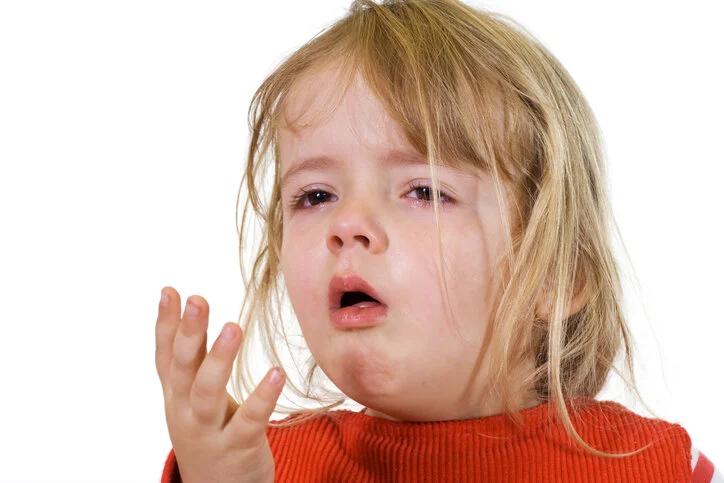Saving Face: How You Can Optimize Facial Development for Your Children (and Avoid the Need for Orthodontics and Other Medical Problems)
Ancestral Medicine
I have always been interested in human evolution and health. I trained for a year with the Kresser Institute For Functional and Evolutionary Medicine because it was the first and remains one of the best evolutionary medicine institutions. Most dentists, however, lack proper education in human evolution and the recent mismatches that lead to disease. I can say the same for most physicians and the general public. The result has been that most of us blame the problems we observe with our distorted faces on evolutionary changes. But too few generations have gone by for evolution to have had such a dramatic effect. The fallout is that we have not looked at the true causes of the problem, especially the preventive measures we can take. Since the changes are too rapid to be evolutionary, we must look to environmental changes as the prime suspect.
We can use evolution to unravel the causes of jaw shrinkage and pathologic changes in our faces by observing how previous generations lived and discovering divergence from our ancestral legacy. Specifically, sleeping positions, early spoon use, allergen exposure, and oral posture are different than our ancestors, making them likely candidates for blame.
Dental Anthropology
In 1984, Robert Corruccini recognized that the increasing need for orthodontic treatment was most likely not a genetic/evolutionary problem. His 250 scientific publications on dental anthropology highlight the orthodontic plight we now face is environmental and primarily preventable. The specific environmental factor is the modern diet. Before I get into the specifics, I want to give a history lesson on the shape of the human face, including the jaws, mouth, and pharynx.
Shrunken Jaws Are Brand New For Us
Before the advent of farming, our jaws were larger; our faces were broader, our teeth were straight, we had adequate room for our wisdom teeth, larger brains, and more space in our throats to breathe. We know this from numerous measurements of preserved skulls compared to modern ones. Anthropologists have noted that the agricultural and industrial revolutions resulted in smaller jaws and less-toned muscles of the face, and throat (oropharynx), due to dietary changes that I will get into later. It is a virtual certainty that our changing diets contributed to crooked teeth and a lack of adequate space for wisdom teeth and constricted airways.
Small Jaws Cause Big Problems
Heart disease, cancer, Alzheimer's disease, ADHD, depression, and anxiety are linked to apnea and poor breathing while sleeping. Obstructive sleep apnea appears in 2-7% or more of children, about 5%–20% in adults, and over 80% in some elderly populations. Restrictions in breathing are also known as Upper Airway Restriction Syndrome or UARS. Although not as problematic as sleep apnea, UARS causes considerable problems, especially in young children. (1)
Oxygen, Sleep, and Health
I frequently find that patients who have small jaws do not appear abnormal to the naked eye. I am able to determine that they do during an examination. I commonly order at-home sleep studies for them. I frequently find they have low oxygen levels when sleeping. Many have hours of low blood oxygen levels at or below 90% every night. The standard for hospital admittance for pneumonia is 92%. (2) We all recognize the danger posed by pneumonia, yet many people are unaware that they have equally low oxygen levels every night.
Soft Foods
The most apparent change in our environment has been softer foods. Farming brings in bread and other grain-based products that are much easier to chew. Dairy also entered our diets with agriculture 10,000 years ago; both are much softer than food hunter-gatherer societies ate. Dr. Leiberman of Harvard University was an early supporter of the softer-food theory, better known as the masticatory-functional hypothesis. (3) To test the theory, Leiberman tested animals called Hyraxes. He fed some of them softer foods, and their jaws did not develop as usual. (4) Weston Price noted that modern foods displace more nutrient-dense foods causing dental and facial deformities. You can read his book on the topic for free here.
Poor Oral Posture
Another prominent contributor to shrinking jaws is poor oral posture. Oral posture is how we habitually hold our jaw, lips, and tongue. Correct oral posture has the teeth lightly together, with the tongue positioned against the palate. Clinical studies by Wong and others show that this posture results in a well-formed jaw with enough space for straight teeth, wisdom teeth, and proper breathing. (5) The pressure of the tongue stimulates the face to grow correctly. When the tongue does not spend most of the time on the palate, the dental arches narrow, the arch of the palate becomes high and vaulted; the face becomes long and thin, the teeth crowd, and breathing can be compromised. (6)
The Causes of Poor Oral Posture
Reasons for poor jaw posture include shortened and non-existent breastfeeding (7), respiratory problems stemming from spending more time indoors breathing with less ventilation spreading infections, and allergies. (8) With frequent allergies and colds, mouth-breathing leads to poor oral posture. Poor muscle tone is also a significant cause.
Proper Swallowing and Breastfeeding
Breastfeeding is critical for ideal facial growth. Infants swallow differently than adults, and it is necessary; otherwise, the face fails to develop. Dentists and pediatricians make sure a tongue-tie does not limit the tongue at birth. If found, dentists relieve the tongue restriction with a quick, safe, and effective laser procedure. Baby bottles and pacifiers result in facial distortions. Prolonged use of both can prevent the change in the way babies swallow with weaning. (9)
Spoon-Too-Soon
Another significant change is spoon-feeding too early in childhood development. In most industrialized societies, spoon-feeding starts at around six months. Babies have a different way of swallowing well suited to breastfeeding, and it is called reverse swallowing. Feeding children with spoons before they are ready disrupts the typical sequence of development. The transition to normal swallowing takes place at twelve to eighteen months. So spoon-feeding can prevent normal swallowing; in turn, poor swallowing can trigger undesirable facial growth. (10)
Beds and Pillows
Lastly, Michael Tetley has postulated that sleeping in beds and using pillows may cause incorrect oral postures resulting in facial deformities. His observations need further investigation, but he notes how primates and other animals sleeping on hard ground resets the posture and diminishes orthopedic problems, including oral posture. (11)
Here Are a Few Things We Can Do
Newborn Checklist
Malformations of the tongue, jaws, and face can be life-threatening and are assessed immediately after birth. The OB will check for a tongue-tie for you: MAKE SURE!
Proper nutrition, including fat-soluble vitamins, water-soluble vitamins, minerals, and other nutrients, is a must before conception and pregnancy. I have all of the details on my website here.
Breastfeeding is a must for at least six months and up to 18 months as a supplement.
Don't use a baby bottle or pacifier.
Have your child spend lots of time outside in the fresh air.
For Additional Info, Click Here.
Infant Check List
At 7 months, pureed meats and softer fruits like bananas, avocados, and mango can be introduced.
At 8 months, bone broth and dairy can be added.
At 10 months, solid vegetables and fruits can be added.
Finally, at one year, nuts and seeds can be added.
Introduce the spoon no sooner than one year to eighteen months.
Hard foods should be consistently fed to your child at this time.
This list is not exhaustive. I include just a portion of it here, as it was part of my functional medicine training. For a much more in-depth list, I recommend Chris Kresser's Healthy Baby Code. Introduction the right foods at the right time is critical for good development of the jaws, face, and body.
Toddler and Child Check List
Have your pediatrician check for large tonsils that can limit breathing
Make sure your child can breathe through their nose. Allergies, frequent infections, and deviated septums are some of the common causes.
Listen for snoring! Click here for my post on childhood and adult snoring.
Your child should be able to form a proper lip seal, although they may keep their lips apart frequently.
Check for speech problems; they may be a sign of trouble.
Myofunctional Therapy
Strong muscle tone is essential. If your child has a medical issue that weakens them, a myofunctional therapist can help. Myofunctional therapy neurologically strengthens and reeducates the face, lips, tongue, and pharyngeal airway muscles. It is like physical therapy, but for your mouth. They teach facial and tongue exercises and behavior modification techniques to promote optimal breathing, oral rest posture, and chewing and swallowing patterns. Read this guest post by Brittny Sciarra for more information on myofunctional therapy.
Conclusion
This post just scratches the surface of all the aspects of proper facial development. The bottom line is that we must be aware of how important it is for optimal health. From the day your child is born, I recommend asking your OB, pediatrician, and dentist about their breathing, swallowing, and overall facial development. Early detection and intervention are the keys to proper facial development for our children.











